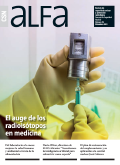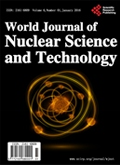 |
 |
 |
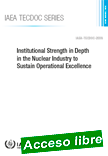 |
Institutional Strength in Depth in the Nuclear Industry to Sustain Operational Excellence
IAEA-TECDOC-2038 ¦ English ¦ 98 pages ¦ Date published: 2023
This publication highlights human and organizational lessons of the Fukushima Daiichi accident and discusses how to make owner/operating organizations of nuclear power plants more sustainably robust and resilient throughout all institutionalized systems. It also discusses how organizations can effectively manage the interfaces with stakeholders such as regulators, the public and within industry.
|
The publication includes many practical examples of institutionalized initiatives that further enhance safety and improve overall nuclear power plant performance. This publication is intended for senior managers and leaders of nuclear power plant owner/operator organizations, and for other associated stakeholders such as manufacturers, vendors, contractors, and national and international industry organizations. Consideration and implementation of these noted initiatives and necessary attributes intend to help them develop strategies that support navigation through a rapidly changing business environment.
|
 |
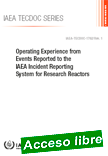 |
Operating Experience from Events Reported to the IAEA Incident Reporting System for Research Reactors
IAEA-TECDOC-1762/Rev. 1 ¦ English ¦ Date published: 2024
This publication provides the operating experience feedback from the events reported to the IAEA's incident reporting system for research reactors (IRSRR) since its launch in 1997. The publication has a focus on the root causes, lessons learned, and corrective actions taken to prevent the occurrence of similar events. It also analyses the key lessons learned from recent events in nuclear power plants that are relevant to research reactors.
|
Reference to other publications that cover research reactor events as well as a description of an operating experience programme are also included. This publication is intended to be used by research reactor operating organizations, regulatory bodies, and designers.
|
 |
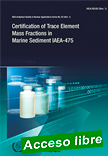 |
Certification of Trace Element Mass Fractions in Marine Sediment IAEA-475
IAEA Analytical Quality in Nuclear Applications Series No. 62 (Rev. 1) ¦ English ¦ 47 pages ¦ Date published: 2024
This publication describes the production of a new certified reference material for trace element mass fractions in a sediment matrix in accordance with the requirements of international guidelines for the production and characterization of certified reference materials. Eight laboratories with demonstrated measurement capabilities participated in the characterization of the sediment sample.
|
This publication replaces the initial certification publication published in 2018 and presents combined results from 2018 and 2022, based on new data that has since become available.
|
 |
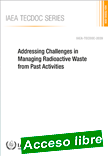 |
Addressing Challenges in Managing Radioactive Waste from Past Activities
English ¦ IAEA-TECDOC-2039 ¦ Date published: 2024
The publication aims to support the safe and effective management of radioactive waste from past activities by presenting focused information on the specific challenges associated with such waste and providing guidance on how to develop and implement strategies to address those challenges. The main objective is to describe typical characteristics of legacy wastes and identify the major challenges to their safe management.
|
In support, information gained through analysis of varied experiences, case studies, good practices and lessons learned are given, aiming to provide guidance on strategies for Member States to overcome these challenges, successfully manage their existing legacy waste inventories, and minimize the risk of their creation in the future. The information provided will be of interest to the waste management community, particularly to those responsible for the safe and effective management of radioactive waste from past activities in their respective countries.
|
 |
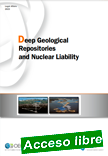 |
Deep Geological Repositories and Nuclear Liability
Nuclear Energy Agency / OCDE ¦ NEA No. 7596 ¦ English ¦ Published: 2023 ¦ 72 p.
The disposal of long-lived radioactive waste in a deep geological repository (DGR) is a scientifically and technically credible solution that meets the need for long-term safety without reliance on active monitoring and management. Nevertheless, it is important to assess the potential risks that may be associated with such a nuclear installation and to ensure that an appropriate regime is in place to adequately compensate third parties in case they suffer nuclear damage caused by a DGR.
|
Therefore, countries developing or intending to develop DGRs must take into account nuclear third party liability regime(s) as long as they apply to the disposal facilities. Those regimes establish a specific legal system that deviates from general tort law principles, including strict and exclusive liability of the operator of a nuclear installation, which will have to maintain a compulsory financial security to cover its liability. Given the unusually long life cycles of such installations, this report discusses issues that concern future generations against the background of the currently applicable legal frameworks for the operation of nuclear installations, and existing technical knowledge, conscious that both will evolve. Nevertheless, it is important to identify and address potential issues regarding nuclear liability with the currently applicable legal frameworks and to set a clear framework for the applicable nuclear liability regime(s) during the different phases of operation of the DGR.
|
 |
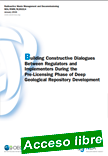 |
Building Constructive Dialogues Between Regulators and Implementers During the Pre-Licensing Phase of Deep Geological Repository Development
Nuclear Energy Agency / OCDE ¦ NEA/RWM/R(2022) 4 ¦ English ¦ Published: Jan 2024 ¦ 70 p.
Safe disposal of radioactive waste (RW), including spent fuel, must take into consideration long timescales as implied by radioactive waste management (RWM). The NEA Radioactive Waste Management Committee (RWMC) supports NEA member countries in the development of safe, environmentally friendly, and economically efficient management of all types of radioactive waste.
|
Stakeholder engagement is crucial throughout the development of long-term waste management solutions. Dialogue between all stakeholders at every stage of the RWM life cycle is necessary to build sustainable relationships and foster trust. In order to improve dialogue between regulators and implementers, the NEA RWMC established in March 2019 the Expert Group on Building Constructive Dialogues between Regulators and Implementers in Developing Disposal Solutions for Radioactive Waste (RIDD). The RIDD is tasked with examining how to more efficiently structure regulator-implementer (R-I) dialogue in the RWM decision-making process. During its first mandate (from March 2019 to March 2023), the Expert Group focused on regulator and implementer dialogue during the pre-licensing stage of deep geological repository (DGR) projects. Many member countries are at this stage in the licensing process. By reflecting on these experiences, member countries identified effective practices and shared lessons learnt.
|
 |
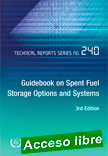 |
Guidebook on Spent Fuel Storage Options and Systems
Technical Reports Series No. 240 ¦ English ¦ STI/DOC/010/240/3 ¦ 178 pages ¦ Date published: 2024
This publication is a new edition of Technical Reports Series No. 240, Guidebook on Spent Fuel Storage (1991). It aims to provide guidance on spent fuel storage options, describing the history and observed trends of spent fuel storage technologies, gathering operational experiences and lessons learned. The evolving aspects related to higher burnup and mixed oxide (MOX) spent fuel, and the extension of storage timeframes are detailed.
|
It also includes information on the distribution of the current global inventory of spent fuel by storage systems, a description of (and terminology relating to) available spent fuel storage technologies and different storage facility locations.
|
 |
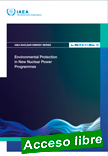 |
Environmental Protection in New Nuclear Power Programmes
IAEA Nuclear Energy Series No. NG-T-3.11 (Rev.1) ¦ English ¦ STI/PUB/2076 ¦ 56 pages ¦ Date published: 2024
Protection of the environment is one of the cornerstones of sustainable development, a key consideration for Member States embarking on new nuclear power programmes. National requirements and international instruments increasingly reflect this concern and for the provision of opportunities for interested parties and stakeholders to be involved in decision-making processes.
|
This new edition provides valuable guidance to Member States on issues related to environmental protection when considering a new nuclear power plant. It aligns more closely with the phased approach and takes into account Revision 1 of IAEA Nuclear Energy Series NG-G-3.1 and highlights the interface with other infrastructure issues. It also considers lessons learned from the 30 Integrated Nuclear Infrastructure Review (INIR) missions conducted to date, and ensures consistency, and alignment of approaches and terminology with other relevant IAEA publications. This publication is primarily intended for Member States who are considering or embarking on new nuclear power programmes, and specifically the decision makers and technical specialists who are involved in environmental protection.
|
 |
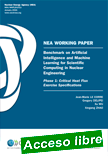 |
Benchmark on Artificial Intelligence and Machine Learning for Scientific Computing in Nuclear Engineering. Phase 1: Critical Heat Flux Exercise Specifications
Nuclear Energy Agency / OCDE ¦ NEA/WKP(2023)1¦ English ¦ Published: Jan 2024 ¦ 49 p.
Under the guidance of the NEA Nuclear Science Committee (NSC), the Working Party on Scientific Issues and Uncertainty Analysis of Reactor Systems (WPRS) studies the reactor physics, fuel performance, and radiation transport and shielding in present and future nuclear power systems.
|
In 2022, the WPRS Expert Group on Reactor Systems Multi-Physics (EGMUP) mandated a new Task Force on Artificial Intelligence (AI) and Machine Learning (ML) for Scientific Computing in Nuclear Engineering to develop a benchmark that will provide guidelines and exercises to help participants to develop and evaluate the performance of their artificial intelligence and machine learning methods. The benchmark activity of this Task Force is structured into two phases: Phase 1: Regression, Classification and Verification, Validation and Uncertainty Quantification (VVUQ); Dimensionality Reduction and Anomaly Detection. Phase 2: Generative Deep Learning and Data Augmentation; Design Optimisation.
This document provides the specifications of the critical heat flux exercise, which is part of the Phase 1 activities.
|
 |
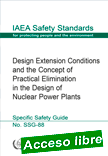 |
Design Extension Conditions and the Concept of Practical Elimination in the Design of Nuclear Power Plants
IAEA Safety Standards Series No. SSG-88 ¦ English ¦ STI/PUB/2055 ¦ 64 pages ¦ Date published: 2024
The objective of this Safety Guide is to provide recommendations for the design of new nuclear power plants related to defence in depth and the practical elimination of plant event sequences that could lead to an early radioactive release or a large radioactive release. It also provides recommendations in relation to design aspects of defence in depth, in particular on those aspects associated with design extension conditions.
|
.??Since the introduction of the term "practical elimination" in the early 90's and the recognition that accident conditions could include design extension conditions without significant fuel degradation and design extension conditions with core melting, those topics have been the subject of extensive discussions and several publications. The purpose of this publication is to facilitate international consensus on the understanding of those topics among regulators and designers and to provide recommendations for their consistent implementation in relevant nuclear power plant designs. In particular, this Specific Safety Guide gives recommendations related to the demonstration of the implementation of the practical elimination concept for those plant event sequences that could lead to an early radioactive release or a large radioactive release, which relies on the physical impossibility or on the high-level confidence that they are extremely unlikely to arise.
|
 |
| |
|
|

|
|
|
| |
|
|
| |
| |
|
|
| |
| |
|
|
| |
| |
|
|
|
| |
| |

